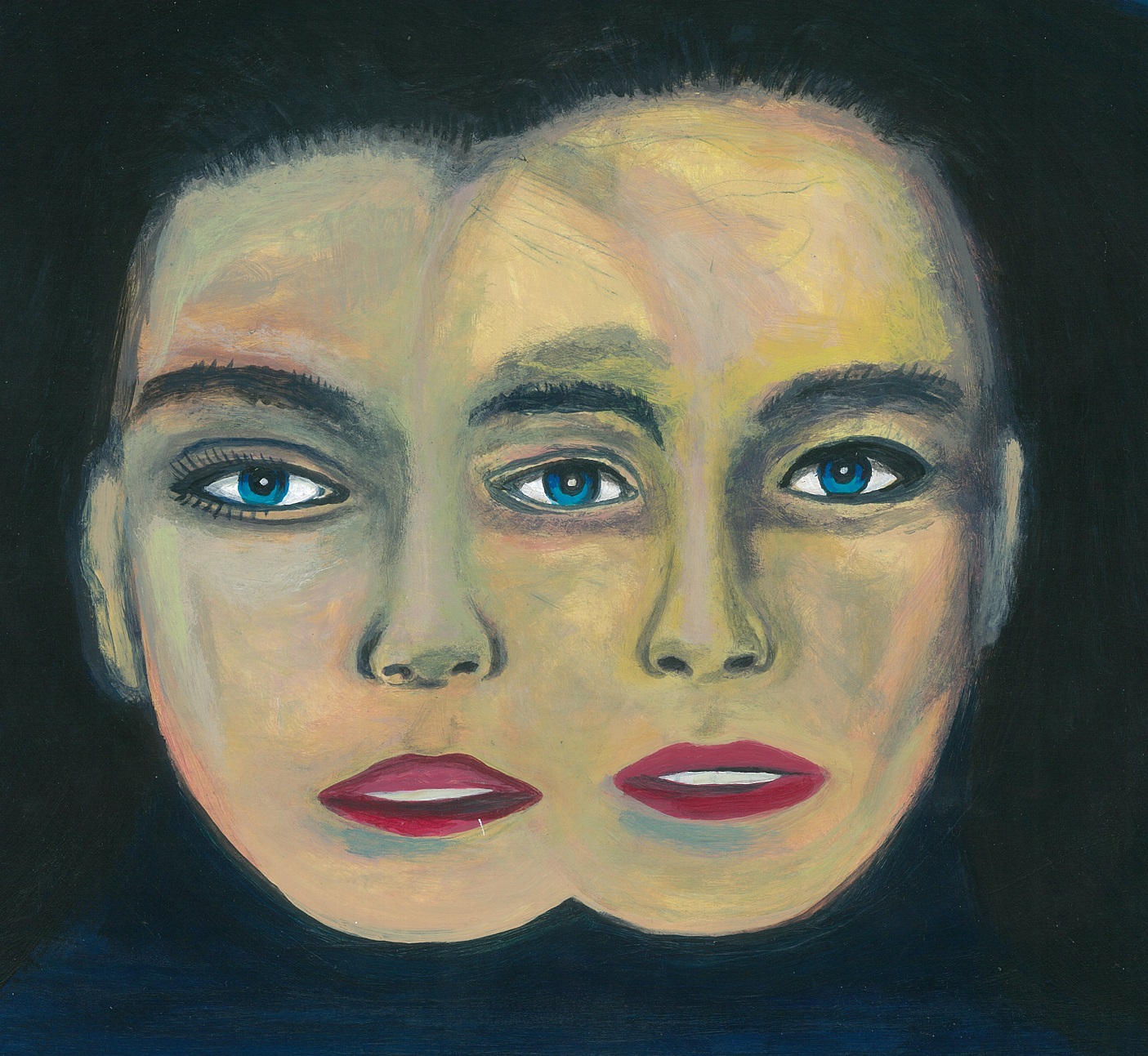
Four of Karen’s alters were personifications of the higher unconscious. Unlike the early repositories of primal wounding, many of these seem to have split off from the central nuclei of consciousness in the late 1960s or early 1970s. The first was sixteen-year old Ann, a pious teenager developed so that Karen might be able to sustain some kind of religious and spiritual life in the midst of a compunction that would emerge when she was reminded that much of her torture occurred under the tutelage of the Catholic Church. Then came Karen 2, a highly spirited, carefree, and humorous twenty-one-year old extrovert who mediated Karen’s social life. From what is mentioned in Switching Time we can assume that her cheerful disposition and philanthropic sentiments won her many accolades. If any alter had an inkling of an ordinary life amongst the bedlam, it was her; it was she who married Josh, had two children, and greeted affluent and important people. But she wasn’t all milk and honey; Karen 2 could also be superfluous, inconsiderate, and self-indulgent. Another alter of the same psychological substrate was fifteen-year old Juliann, born to chronicle every aspect of Karen’s life. Like Karen 2, Juliann was feminine, energetic, and a bit of a motor-mouth. She was also rowdy and disorganized, and when she was ‘out’ the system would frequently find itself in spots of bother. The final birth of this alter group was Jensen, an eleven year-old ambidextrous artist born to express the intricacies and subtleties of nature’s handiwork. Jensen lived in a cold and desolate world, and he dampened his pain by drawing, painting, sculpting, and perusing florid scenery. His ebony colour reflected Karen’s unconscious rejection of the father’s narrow-mindedness and racial intolerance, and her altruistic acceptance of all human beings regardless of sex, ethnicity, colour, or sexual orientation. He was all about creativity, wonder, and harmony in the universe, however momentary exposure to sexual abuse also incurred the spontaneous expression of some lower unconscious traits. Jensen hated older men–incidentally the demographic responsible for the vast corpus of the trauma–and could be very defensive.
Alters born around the mid-1970s encompassed middle unconscious characteristics including the maintenance of identity and improved functionality. The primary purpose of eight-year old Elise, for instance, was to keep the operative and the wounded layers of the unconscious separate and to feign security and innocence. On the other hand six-year old Thea acquired an autonomous existence when Karen’s parents enunciated the hope that her aneurism might precipitate her death. In addition, Thea bequeathed to Karen the hitherto unrealized archetypal defence of psychosomatic illness; whenever Karen wanted to evade the horrors of bearding the paternal lion in its own den, she would simply call upon Thea to motivate eviction from the household by making her very sick; severe sickness always resulted in hospitalization, and hence the ephemeral dissipation of threat. Three others middle unconscious alters–Karen 1, Claire, and Sidney–were bifurcated in nature, possessing aspects that straddled the former and the abyssal regions of the lower unconscious. The dimensions of Karen 1 included the development of physiological, linguistic, and semantic capacities as well as traumatic memories and mental accidents like headaches connected to a rape carried out against Karen by her grandmother’s brother, Constantine. Similarly, Claire exhibited all the likes and dislikes of an inquisitive seven-year old girl but beneath that veneer lay the sadistic origin of her unnatural creation; she was born to endure pain wrought from vaginal penetration with a crucifix and emerged habitually whenever ritualistic paraphernalia connected to the event was perceptually categorized. The five-year old attention-seeking boy named Sidney was also dual in nature; on one side he liked to get up to mischief and juvenile pranks but on the other he cried, stole things, and suffered chronic pain.
Finally, we have the alters expressive of lower unconscious qualities, in others words repositories couching the traumatic memories and mental accidents associated with a particular kind or period of abuse. The perceptual categorization of this group was primarily mediated by the interconnected life cycles of emotional and physical abuse; as soon as a particular strand ceased, the alter that served as an archetypal defence in dissociating consciousness from the associated experiences also stopped developing. The oldest was Karen 3, a thirty-year old emotional wreck born to deflect verbal insults from her father, mother, and husband. She was riddled by persistent anxiety, suicidal thoughts, and feelings of worthlessness. Then there was Sandy, a neurotic and overweight teenager who came into being when Karen was about twelve in order to relieve little Claire from her lurid duties. Frozen at a slightly younger age than Sandy was Julie, a terrified haemophobic alter of ailing heath; the latter created mental stigmata like amnesia in Karen by commandeering the memories to do with her forced prostitution. Dissociation seems to work in weird and wonderful ways; when Karen couldn’t bare the excruciating pain wrought from electric shocks, wax dripping, and sharp prodding being inflicted upon her womanly regions during the Satanic rituals, alters of the opposite sex were created. Eight year old Miles split from the central nuclei of consciousness to contain indignant feelings and seething hatred towards Karen’s assailants for having been subjected ad nauseaum to these deepest violations of self. By the same token the slightly younger Karl formed as a masculine dam to drown transient perceptions of being tortured inside a coffin, ones that neither Miles nor Claire could tolerate. The severe pain allied to this event is symbolically encrypted in Karen’s conception of Karl harbouring a disfigured and broken jaw. The youngest of this group, two-year old Karen Boo, split during Karen’s second year of life to dissociate experiences of isolation and abandonment activated each time Karen’s parents vocalized the intent to give her up for adoption.
Baer integrated the alters of the higher, middle, and lower unconscious through a series of hypnotic inductions. The process involved the creative visualization of the same locus in which Karen had first become acquainted with each of her seventeen alters, the safe room. Baer would facilitate a psychic confluence by inviting an alter that was ready to integrate into this room and prompting it to expound its purpose. At the end of the conversation, he would request that the alter slide into Karen’s form. It took nearly two years to complete integration. The first alter, Julie, was merged in August, 1996; the last, Holdon, in April, 1998. Each amalgamation offered up a slice of autobiography, an assemblage of memories, feelings, and perceptions, and released certain qualities and characteristics back into the trunk personality. This resulted in a series of striking and awe-inspiring transformations in Karen’s psychological and physical makeup. First, she jettisoned the one-dimensional fickleness and simplicity that usually typifies victims of dissociative multiplicity and became a multi-tiered conscious personality, equipped with depths of being previously absent. Moreover, she tuned into the dynamics of the interactive field and began to express an intense interest in the topography of her immediate environment. These empathic reconnections were evident in the emergence of vocal inflections; in subtle nuances to body language; and in a novel appreciation for luxurious comforts and personal décor. By the end of April, 1998, she had begun to acquire a sense of selfhood, of I-amness, and the first inklings of a relationship to the greater cosmos. Fuelled by psychological aptitude, she could now chart pelagic waters, territories, and horizons she never knew existed. The only drawback to transformation is that it is accompanied by its opposite; to ascend we must first descend, and every new crisis in self-esteem is often riddled by an element of fear and overwhelming vulnerability, as Karen herself revealed: “I think there are two different kinds of becoming whole. Most people go on one journey to fully become the person they can be in a lifetime. I must go on two journeys–one journey to integrate all my selves, and a second, like everyone else to discover who I am. The second journey can’t start until I complete the first. I will then be no different than everyone else trying to make the best of my life. This I fear. Do I have the strength to begin again?”[1]
Indeed, there are two different kinds of becoming whole. The first is called personal psychosynthesis, in which we reconcile our subpersonalities about the axis of a conscious singularity, the I. The second is called transpersonal psychosynthesis, and involves Self-actualization or unfolding our creative potentialities and authentic selves without violating the laws of our own being. In this destiny we all stand united.
[1] Richard Baer, Switching Time: A Doctor’s Harrowing Story of Treating A Woman with Seventeen Personalities (New York, USA: Random House, 2008), pp. 326.









